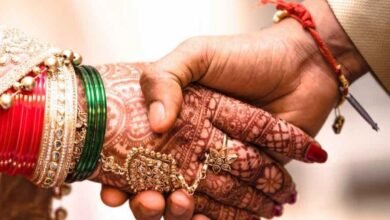
“Divorce isn’t such a tragedy. A tragedy is staying in an unhappy marriage and teaching your children the wrong things about love. Nobody ever died of divorce.”
An unhappy marriage is indeed a tragedy. As per National Crime Report Bureau (NCRB) data, an average of 20 Indians kill themselves each day owing to the toxic consequences of marital problems. But is divorce the only ‘healthy’ alternative?
According to a report presented by the United Nations, divorce rates in India have increased by twofold since the advent of the millennium. The report also illustrates an unprecedented spike in divorce rates of couples who have spent 10 to 20 years in marriage, also called ‘grey or silver divorces’! Such a revelation should be a shocker, as India has the lowest divorce rate in the world (1.1%).
The term “divorce” means a legal procedure to dissolve the union of marriage. The ground of divorce ranges from adultery, cruelty, desertion, venereal disease, psychological disease, mutual disagreement, lack of understanding, inadequate time for intimacy, to lack of trust and respect.
Why are divorces increasing, then? Or, why has India’s divorce rate been abysmally low thus far? Do lower divorce rates mean a happier society? The answer is much more layered and complex than what can be delved from initial observations.
Why does India have the lowest divorce rate in the world?
Indian society, which is predominantly Hindu, considers marriage as a sacred socio-religious institution. It has been ingrained in our minds that marriage is a pious mechanism through which two individuals enter into a ‘life-long commitment.’ Thus, it is difficult for an individual to break free of an institution with such devout religious and social sentiments involved.
While we flaunt how India has the lowest divorce rate in the world, we forget to mention how India has the highest cases of domestic violence and dowry harassment, too. Empirically observing this, we get a hint of how millions of couples in India lie trapped in ‘abusive relationships.’ It is reflected in the fact that while the offence of ‘marital rape’ stays legalised, the choice for ‘same-sex marriage’ has gotten demonised by Indian politicians.
According to NCRB data in 2018, housewives (homemakers) comprised the second largest segment of suicidal deaths in India. The NCRB data of 2019 illustrated one lakh cases of domestic violence in the year. The patriarchal nature of Indian society, which commands that every woman needs a male guardian, does not help much.
Low female literacy and the lack of participation of women in the workforce are the main reasons behind low divorce rates in India. Families decide not to invest in a girl child’s education but rather save funds for her marriage, as if ‘marriage’ ought to be the only goal in her life. Thus, for a girl, her marriage is not just an institution for love, respect, and equality but a protection from the ‘predatory’ society and her financial security.
She depends on her husband for all her basic needs, and her discretion extends only to choosing the episode of a TV soap opera. In such a situation, even if her husband behaves in an abusive manner, by filing for a divorce, she shall only shoot herself in the foot.
Even if she battles a lengthy procedure and achieves the divorce, the stigma of being a ‘divorcee’ makes her a subject of the worst kind of misogyny and moral policing. In India, divorced women get labelled as “damaged and used goods!”
For Indian men, it is equally (if not more) difficult to get a divorce. In India, the grounds of mutual divorce are unfairly aligned towards women. If a husband unilaterally files for a divorce, he must do so on the grounds of ‘fraud’ or ‘abuse.’ A lack of understanding and respect is not rendered a viable ground.
A unilateral divorce case might take ten years to see the light of the day. Often, the wife does not agree to grant a divorce under speculations that her husband might marry someone else. Thus, many men do not file for divorce but live in separation instead. Data suggests that the number of people living in separation (legally married) is three times the number of divorcees.
Why the sudden flux in divorce rates?
Indian women have an unprecedented involvement in the national workforce at present times. Thus, a woman need not put up with an abusive husband, fearing the economic consequences of a divorce. Late marriages instil an uncompromising attitude between the couples, giving way to the clash of egos. Couples often view their personal lives as hindrances to excelling in professional lives.
Such is the increase in ‘exposure’ and ‘freedom of choice’ among married couples in the “post-internet world” that partners often prefer replacing each other than working on themselves. As ‘old fashioned’ as it may sound, modern dating apps and ecosystems advocate the Western ideals of ‘infidelity’ and ‘hook-up culture,’ where loyalty gets tossed out of the window.
Notwithstanding the necessity of ‘divorce’ as a tool to terminate abusive relationships, the impact of divorce and custodial battle on the mental health of a child can never be undermined. During and after a divorce, the concerned couple’s child is the silent victim. Hence, couple therapy can be a viable method of negating the chances of divorce.
The rising cases of divorce might sound ’empowering’ to some. However, the increase in divorce rates (especially in urban India) indicates the depreciation of the fundamentals of any healthy marriage relationship in society — self-control, compromise, and loyalty.




